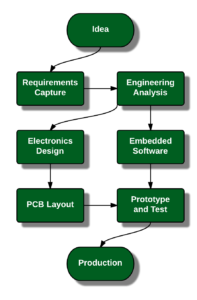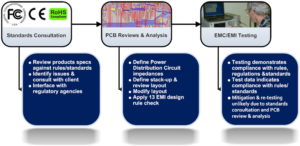Printed Circuit Board Reverse Engineering Test includes three phases from initial inspection, test plan objective to worse-case analysis:
First consideration is Initial inspection
The test requirements to be determined include initial inspection and testing of the hardware provided for printed circuit board reversing engineering, and for inspection and acceptance of the prototype to be built and tested in accordance with the preliminary Technical Drawing Package. Special testing and test equipment/fixture requirements should be identified and a test plan developed.
Test plan objective
The objective of the test plan is to verify adherence to the requirements delineated in the applicable specifications and standards, including verification of performance, determination of reliability and endurance, and verification of structural integrity.
Worse-case analysis
If the available documentation lacks sufficient test data, a worse-case analysis should be performed to develop testing criteria and procedures, including critical failure modes and limitations. Experts in the field should be contacted to identify common failure areas. The tests for item failure limits, such as overload, fatigue, vibration, and temperature, are the most convincing means of ensuring equivalence of manufacture.
The Acceptance Test Procedures should define these requirements and specify the test procedures in accordance with the applicable specifications and standards. A Printed circuit board sample Test Plan Format is provided in below figure.








